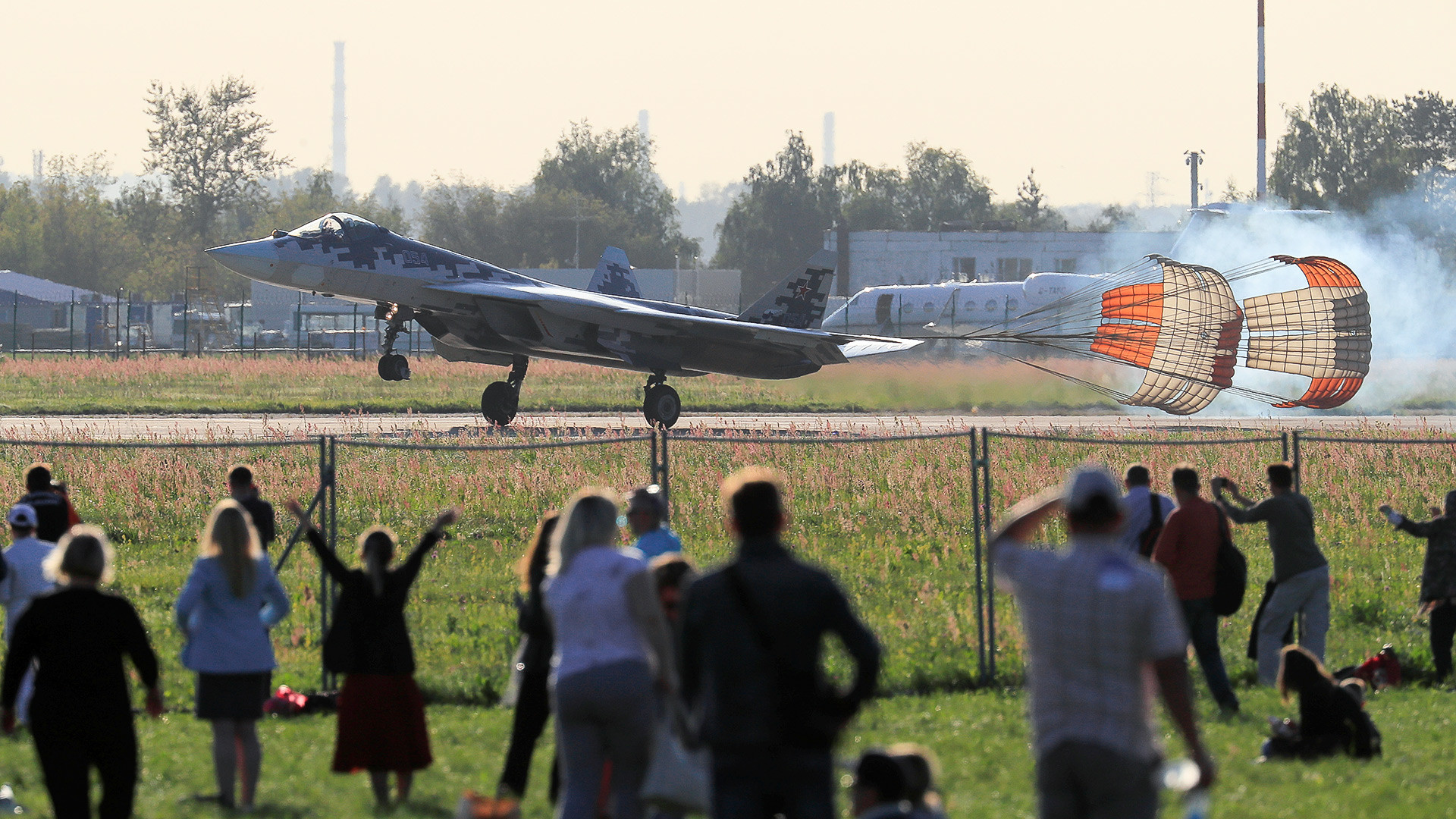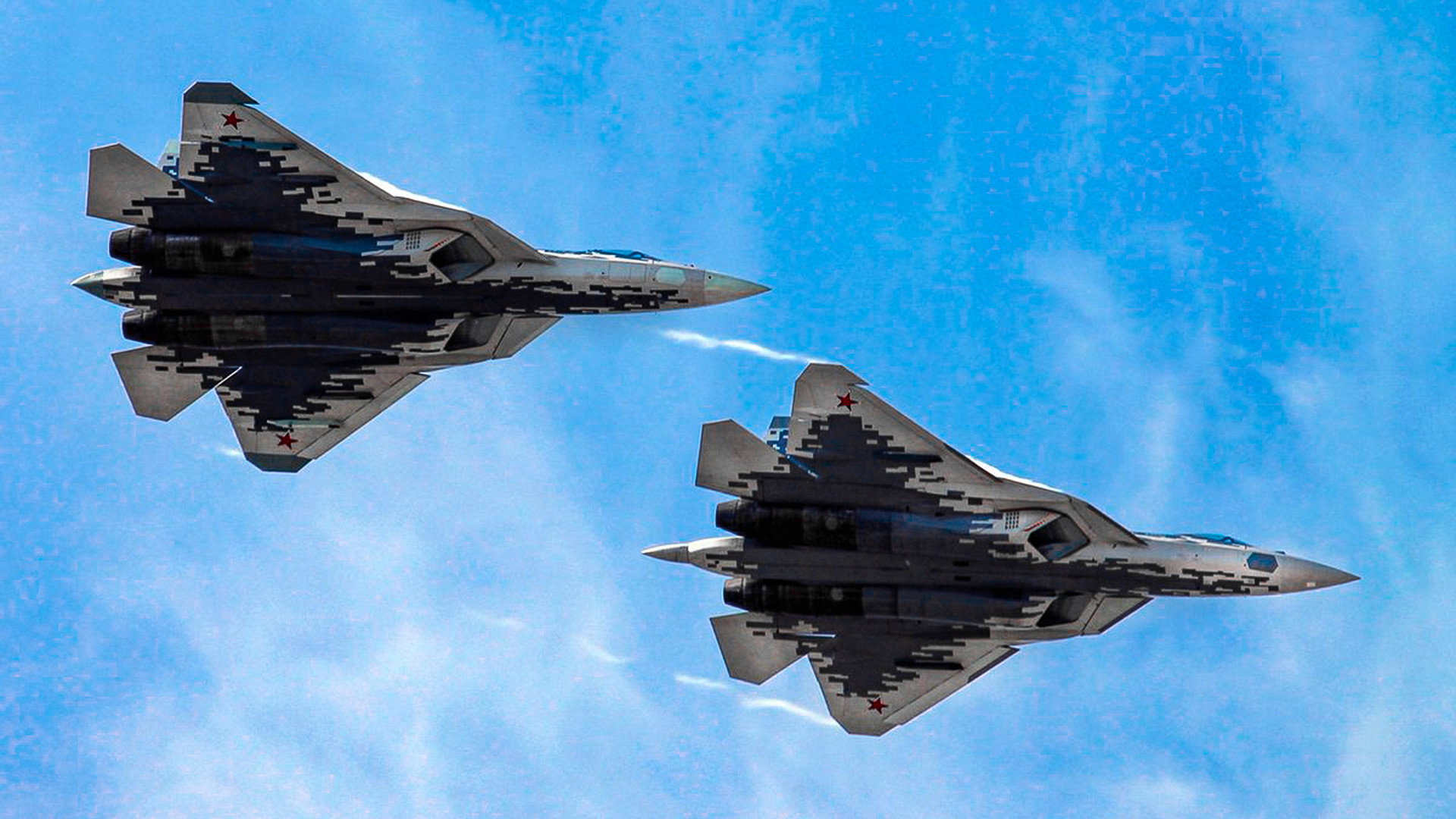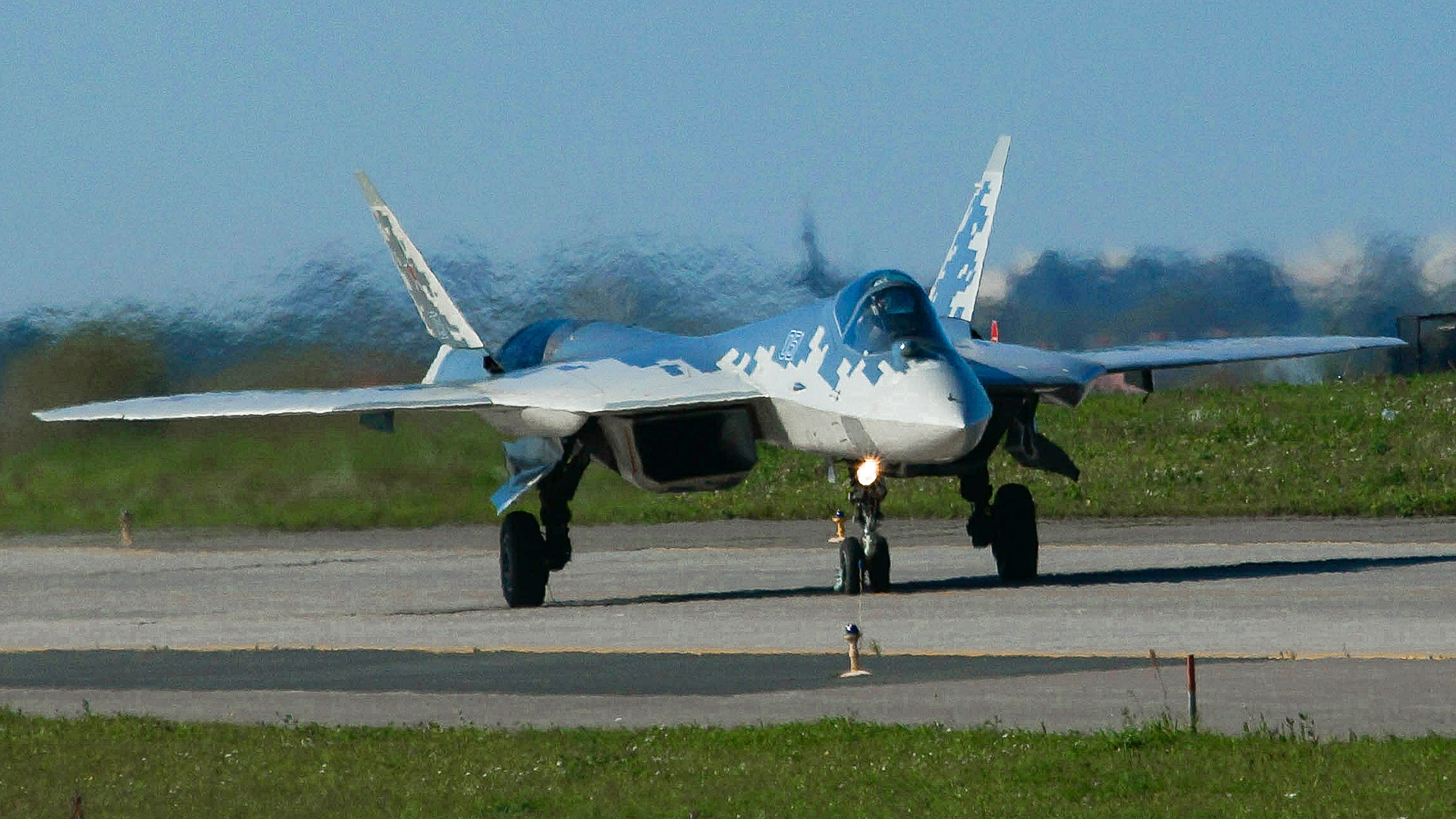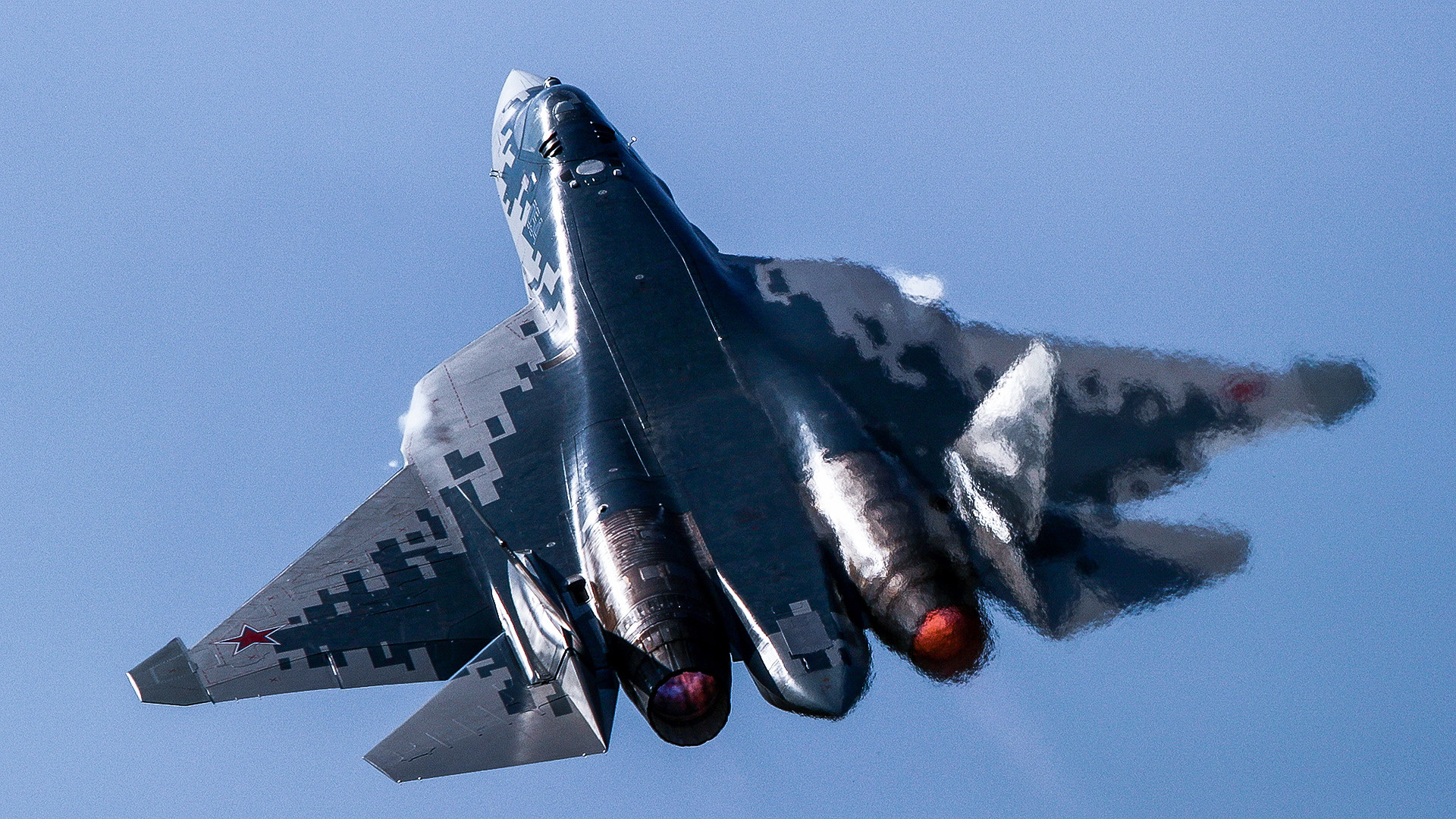The Su-57 5th-gen fighter jet for DUMMIES

It could be NATO’s
In August 2019, the Russian president Vladimir Putin examined a Su-57 alongside Turkish President Recep Tayyip Erdoğan at the MAKS-2019 airshow in Moscow’s suburbs. The two even discussed the potential purchase of these planes by Turkey - a NATO member.

It’s the only rival of America’s top fighter jets
The Su-57 is the second fully built fifth-generation fighter jet in the world (China is still working on its Chengdu J-20).
It was created to rival America’s best ever created planes in the skies - the F-22 Raptor and the F-35 Lightning II.
History of the Su-57
This fighter jet has been in development since the beginning of the 21st century.
Ten years later (in 2010), it took off to the skies for the first time.
In the beginning, the project was widely
Throughout the years, it used the previous generation’s “hearts”, thus not presenting the necessary flight and aerial fighting capabilities during tests. Yet at the end of 2018, these issues were resolved and the Su-57 went into serial production.

The Su-57’s engine is a beast
The jet received a new generation jet engine that allows it to accelerate in non-afterburner mode to supersonic speed and maintain it throughout the entire flight.
It flies at a speed of more than 2,000 km/
It’s undetectable on radars
One of the biggest challenges in fifth-generation jets’ development
In order to achieve that engineers had to hide all of the weaponry (guided and unguided missiles, as well as bombs) within the fuselage. They also had to use the latest and most expensive composite materials in the airframe construction.
These tasks are extremely difficult, due to the overload fighter jets have to withstand in the air, while flying at top speed and maneuvering during dog fights

The Su-57 holds a bunch of air-to-air and air-to-surface missiles, as well as a 30-mm gun. As mentioned before, none will be hanging from the wings, but rather they will be concealed inside the plane’s body.
During the Syrian campaign, Russian Aerospace Forces tested a series of weapons that may be installed on the fifth-generation fighters. In particular, the OFZAB-500 high-explosive incendiary aviation bomb and the ODAB-500PMB volume-detonating aviation bomb are being considered for the Su-57.
Hypersonic missile technologies are also being developed to be used in Su-57 weaponry. The results of this work will be announced in the early 2020s.
There will be 76 Su-57 in the Russian military
At least, that’s how many have been ordered by the country’s air forces.
Each Su-57 costs $34.4 million (!)
However, this is just a rumor. In any case, that’s nearly five times cheaper than its American rival F-22 Raptor, which costs the US Army $146,2 million (!) for each jet.

What’s better - Su-57 or F-22?
Both fifth-generation fighter jets are masterpieces. And each one has strong and weak
International aviation experts suggest that Russian Su-57 is far more
They suggest that “Americans” are practically unseen on radars, but if somehow detected, they have
Where will the Su-57 be stationed?
They will be deployed across Russia. However, no plans to station them on territories of the country’s allies, as well as on Russia’s military bases abroad, have been made yet.
If using any of Russia Beyond's content, partly or in full, always provide an active hyperlink to the original material.
Subscribe
to our newsletter!
Get the week's best stories straight to your inbox